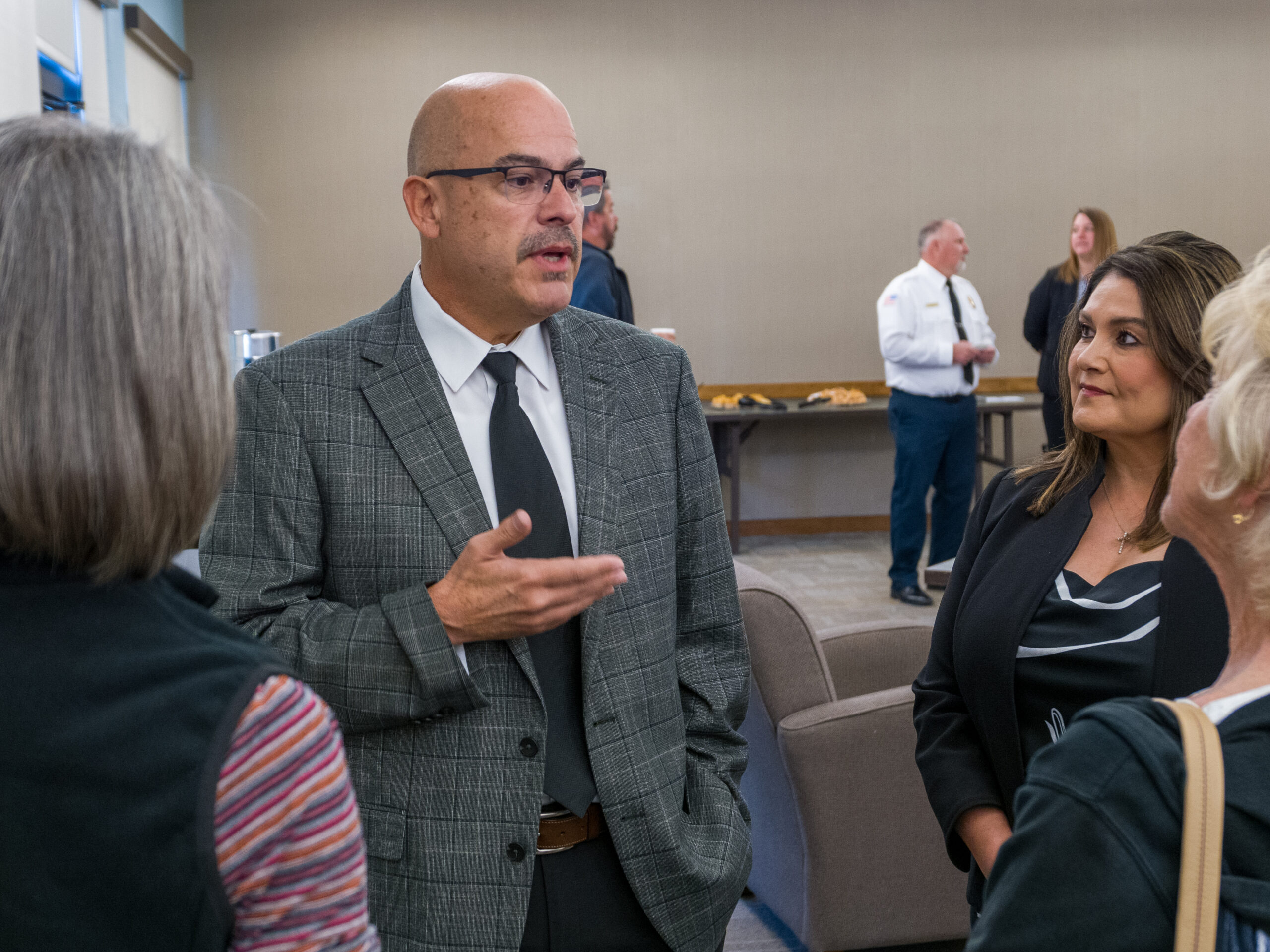Swords and sabres might not be used that much in combat these days, but they’ve been a fixture with the military for millennia.
At Fort Verde State Historic Park, a few blades are kept on display that used to belong to officers stationed at the 19th century military post.
One man has stepped up to make sure those swords are cared for properly.
Mark Cain moved to Prescott around seven months ago. He lives on the other side of the mountain, but still comes once a week to Camp Verde to not only care for the weapons, but to help out around the fort. Cain was visiting Fort Verde recently with his wife.
“We were bored and wanted to explore the area,” he said.
Cain came across the fort and was immediately taken with the history of the place.
“It’s really unique,” Cain said. “There aren’t very many places like this.”
He also noticed how the swords at the fort were being displayed.
“It was being kept in the scabbard, in a liner of beechwood,” Cain said.
That’s not good for blades kept around long-term, as it can lead to corrosion.
Cain pointed it out to Sheila Stubler, park manager at the fort.
“I said, ‘Well, if you happen to know any sabre experts, let us know,’” Stubler said.
That’s when Cain said, “Well, actually ….”
Cain has been obsessed with swords for most of his life.
He has more than a hundred old swords that he collects and keeps in his home.
“I try to keep it looking like I only have 60 for my wife,” Cain joked.
He’s got a system where he can display his own swords from the ceiling.
Cain knows all the terminology to describe the swords and the parts that make them up. He’s keen to learn the history of swords he owns.
He points out one he bought at an auction in the United Kingdom. There was a particular crest on the pommel and he tracked it down as the former property of an Englishman who had served in the Austrian military in the 19th century.
Through his research, Cain was able to contact the man’s descendants and learn a lot more about his life.
“It’s a way of connecting an actual life to an inanimate object,” Cain said.
Cain has also been looking into the history of one of the swords at the fort, one that belongs to Lt. Col. John Wilkins, the man behind the “colonel” in the Capt. Charles King’s novel “The Colonel’s Daughter: Or, Winning His Spurs,” published in 1882.
The sword was purchased by three younger officers and given to Wilkins Their names are inscribed on the sword.
Cain said he figures Wilkins must have helped out the men some way, possibly with their careers.
Cain said he became fascinated by swords as a child.
“I was raised on a diet of cheesy movies about knights as a kid,” Cain said. “Then I grew up and had the opportunity to do this.”
Cain said his parents were happy to indulge him as a child, with replicas and reproductions of swords for special occasions like birthdays.
In addition to caring for the weapons at the fort, Cain said he’s also started helping the fort try to find ways to make recruitment of volunteers more efficient.
“We’re trying to codify the process,” Cain said.
As for the swords, Cain is familiar with the process.
“It takes some WD-40 and steel wool to remove the grit that builds up on something that’s been sitting around for 150 years,” Cain said.


